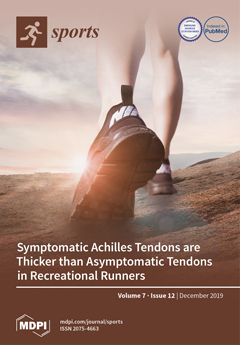This study (1) investigated the effects of age, maturity status, anthropometrics, and years of training on 11–14-year-old male basketball players’ physical performance and technical skills development, and (2) estimated the contribution of maturity status and training years on players’ physical and technical performances.
[...] Read more.
This study (1) investigated the effects of age, maturity status, anthropometrics, and years of training on 11–14-year-old male basketball players’ physical performance and technical skills development, and (2) estimated the contribution of maturity status and training years on players’ physical and technical performances. The sample consisted of 150 participants, average age 13.3 ± 0.7 years, grouped by early, average, and late maturation. Biological maturation, anthropometry, and training data were collected using standard procedures. Measures of physical performance assessed included: aerobic fitness, abdominal muscular strength and endurance, static strength, lower body explosive power, upper body explosive power, speed, and agility and body control. Basketball-specific technical skills were also recorded. Analysis of variance (ANOVA) and analysis of covariance (ANCOVA) were used to compare group differences. Results indicated that early maturers were taller, heavier, and had greater strength, power, speed, and agility (
p < 0.05). When controlling for age, height, and body mass, early maturers remained stronger, quicker, and more agile (
p < 0.05). They were also more skillful in the speed shot shooting test (
p < 0.05). Apart from tests of aerobic fitness, abdominal muscular strength and endurance, and lower body explosive power, maturity status was the primary contributor to the variance in the physical performance tests. Years of training was the primary contributor to the variance in the technical skills tests. Whilst physical performance was dependent on maturity status, technical skills were influenced by years of training. Since both biological maturation and years of training play an important role in basketball performance, we recommend that coaches consider the effects of these two confounders when recruiting and selecting youth basketballers.
Full article






